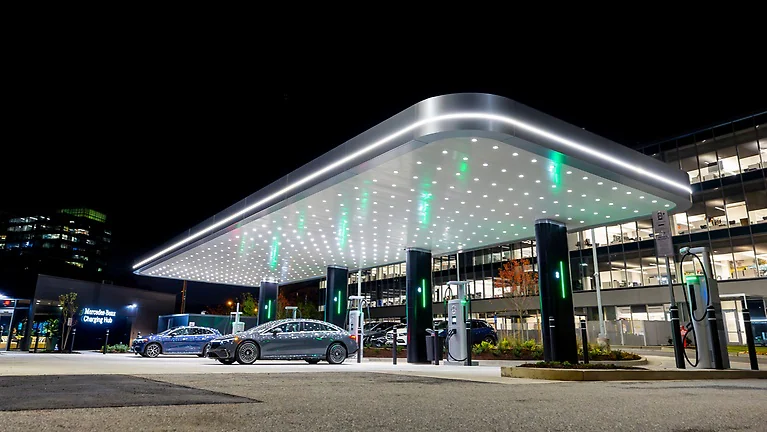In recent years, the electric vehicle (EV) market has seen unprecedented growth, with 2024 marking a pivotal moment for sustainable travel. Did you know that the number of fast-charging stations worldwide has doubled in just the last two years? According to Bloomberg Green, this surge in charging infrastructure is not only reshaping how we perceive road trips but also eliminating one of the biggest barriers to EV adoption—range anxiety. In this article, we’ll explore how fast-charging networks are revolutionizing EV travel in 2024, diving into the latest technologies, the expansion of charging infrastructure, and practical tips for EV owners.
The Rise of Fast-Charging Networks
Why Fast-Charging Matters
Fast-charging networks have become a game-changer for EV travel by significantly reducing the time it takes to recharge a vehicle. Unlike traditional Level 1 or Level 2 chargers, which can take several hours to fully charge an EV, fast chargers (often referred to as DC fast chargers) can provide an 80% charge in as little as 30 minutes. This efficiency makes long-distance travel more feasible for EV owners and is a crucial factor driving the widespread adoption of electric cars.
- Efficiency: Fast chargers can add about 200 miles of range in 20-30 minutes.
- Convenience: With more chargers available, drivers have greater flexibility in planning their routes.
- Reduced Range Anxiety: Knowing that a fast charge is just a short stop away eases concerns about battery depletion.
Key Players in the Expansion
The global expansion of fast-charging networks has been spearheaded by several major players in the industry:
- Tesla Supercharger Network: Tesla has been at the forefront, with over 40,000 Superchargers worldwide. Their proprietary network ensures Tesla owners can confidently travel long distances.
-
Electrify America: Owned by Volkswagen, Electrify America plans to have 1,800 charging stations with over 10,000 individual chargers by the end of 2024, primarily in North America.
-
Ionity and European Expansion: A joint venture between automakers such as BMW, Ford, and Volkswagen, Ionity aims to deploy 400 high-power charging stations across Europe.
-
ChargePoint and EVgo: These networks are rapidly expanding in urban areas, providing accessible fast-charging options in cities.
Innovations in Charging Technology
Ultra-Fast Charging Technologies
The year 2024 has witnessed significant advancements in charging technology, particularly in ultra-fast charging. Companies like ABB and Siemens are developing chargers capable of delivering up to 350 kW, potentially adding 100 miles of range in less than 10 minutes. This leap in technology is facilitated by advancements in battery chemistry and cooling systems, allowing for safer and faster charging.
- Example: The Hyundai Ioniq 5, equipped with an 800-volt system, can utilize these ultra-fast chargers, making it one of the fastest-charging vehicles in its class.
Wireless Charging: The Next Frontier
Wireless charging, or inductive charging, is another exciting development on the horizon. While still in its early stages, companies like WiTricity are testing wireless systems that can charge EVs as they drive over charging pads embedded in roadways. Although widespread adoption is a few years away, the technology promises a future of seamless and convenient charging.
Practical Tips for EV Owners
How to Maximize Fast-Charging Efficiency
- Precondition Your Battery: Many EVs allow you to precondition the battery, optimizing its temperature for faster charging.
-
Plan Your Route: Use apps like PlugShare or the Tesla app to locate fast chargers along your route and plan stops accordingly.
-
Membership Programs: Join charging networks like Electrify America or ChargePoint for membership discounts and exclusive access to charging stations.
Where to Find Fast-Charging Stations
- Major Highways: Fast chargers are strategically placed along major highways to facilitate long-distance travel.
- Urban Centers: Cities across the globe are increasing their fast-charging infrastructure to cater to urban EV drivers.
- Retail and Hospitality Locations: Many shopping centers and hotels now offer fast-charging options as a service to attract eco-conscious customers.
Impact on EV Adoption and Future Trends
The rapid expansion of fast-charging networks is not only transforming the way we travel but also accelerating the adoption of electric vehicles. As more drivers make the switch to EVs, we can expect to see:
- Increased EV Sales: With reduced range anxiety, consumers are more likely to consider EVs for their next vehicle purchase.
- Sustainability Goals: Government initiatives aimed at reducing carbon emissions are supporting the growth of charging infrastructure.
- Technological Innovations: Continued advancements in battery technology and charging efficiency will further optimize travel experiences.
Conclusion
Fast-charging networks are undeniably revolutionizing EV travel in 2024, making it more accessible and convenient than ever before. As these networks continue to expand and evolve, they hold the potential to not only change the way we drive but also contribute significantly to global sustainability efforts. Are you ready to embrace the electric future? Share your thoughts on how fast-charging has impacted your EV experience. Looking forward, the integration of renewable energy sources with fast-charging stations could be the next big leap in creating a truly sustainable mobility landscape.

